Contexts and issues
‘Listening’ can have a range of meanings, from barely-conscious ‘hearing’ of sounds that daily surround us to the intensely-concentrated experience of those who set aside dedicated time for listening to concerts or recordings in controlled surroundings. Small wonder, then, that this range of activities is studied in so many different ways and in so many seemingly disparate academic disciplines. The field of ‘sound studies’, for example, examines the impact of sounds (including musical ones) made by vehicles, machines, humans and other agents on environments such as cities, workplaces and homes.1 Within studies relating to music, a variety of lines of enquiry have emerged. Experiments with human subjects have provided evidence for psychologists and neuroscientists, who study the effects of listening on behaviour and on the brain.2 Observation (including participant observation), interviews and questionnaires provide the evidence used by anthropologists, ethnomusicologists, social scientists and musicians.3 Social and cultural historians and musicologists use texts such as diaries, correspondence, published reviews, theoretical writings and the music itself in the course of their studies.4
The musicological literature of listening goes at least as far back as 1874, when Hugo Riemann published his dissertation ‘Über das musikalische Hören’.5 Riemann was followed by Heinrich Besseler in the first half of the twentieth century,6 but neither prompted any great awakening of interest in the scholarship of listening, and their texts encouraged listening in the context of understanding the structure and characteristics of a work. As Alexander Rehding puts it:
Riemann’s musical thought was centrally concerned with the aesthetic perception of the work under the category of a structural ‘musical hearing’. This form of hearing is presented as a logical activity – and a strenuous one at that, which requires the full concentration of the listener.7
Arguably, the musicological literature of listening goes back further still, for example, in texts that were designed to educate audiences in how to listen. Christina Bashford has published a number of works on the role of mid-nineteenth-century musicians who set out to inform individuals about the music to which they were listening by means of programme notes and other educational tools.8 But here again, the focus was on listening as a means of understanding the musical work.
It was much later, in the 1990s, that musicologists began to direct attention to the listeners themselves, in particular the emergence of silence as a context for listening, as well as how listening was shaped by listeners’ mind-sets and environments. One of the most important texts that emerged at this time was James Johnson’s Listening in Paris (1995),9 which highlighted a significant change in the behaviour of audiences from 1750 to 1850 studied in their social and aesthetic contexts. Johnson’s claim that audiences of the nineteenth century began to listen more intently provoked extensive comment in reviews and sparked debate elsewhere. William Weber’s article ‘Did people listen in the 18th century?’ questioned whether listening habits had changed in the nineteenth century as radically as Johnson had suggested.10 This article was itself part of an Early Music11 issue published in 1997 and devoted to an exploration of historical listening which took into account a variety of physical (buildings), religious and social contexts. In the same year another journal, The World of Music, focused a whole issue on listening practice, including articles on a wide variety of geographical and cultural repertoires.12 A year later the Musical Quarterly went a step further still with a double issue concentrating on early western music.13
Striking though this scholarly activity was, it failed to provoke a flood of new ideas in the years that followed. But there were some exceptions, such as Matthew Riley’s 2004 monograph Musical Listening in the German Enlightenment: Attention, Wonder and Astonishment, which examines the aesthetic behind the way that intellectuals believed music should be experienced in the period.14 Leon Botstein, who had edited the special issue of the Musical Quarterly in 1998, published The History of Listening: How Music Creates Meaning in 2005,15 while in 2010 a special issue of the Journal of the Royal Musical Association was published, edited by Nikolaus Bacht and entitled ‘Listening: interdisciplinary perspectives’. This collection draws on a 2006 conference of the same title at the University of Cambridge. In his introduction to the journal issue Bacht welcomed the developments of the 1990s which ‘effected a change of perspective from the object to the subject of listening’, while claiming that the current field ‘is split into two camps that have not reached any kind of consensus, with music psychologists and cognitive scientists on one side, and social and cultural historians on the other’.16 The conference and journal article was an attempt to bring some of those disciplines together. Bacht now runs the History of Listening Research Group at the Humboldt University of Berlin, not far from where the conference, The Art of Listening and its Histories, was held at the University of Potsdam in 2012, which included papers by a number of contributors to the 1990s debates.
In 2013 the Listening Experience Database (LED) was established. Funded by the Arts and Humanities Research Council (AHRC), and including researchers from The Open University and the Royal College of Music, its aim is to facilitate the study of historical accounts of listening. The research of the LED project is based on empirical evidence gathered together in a Linked Data database.17
The LED project
The first phase of the LED project focused on two main research questions: how has listening to music been experienced by individuals, and how can a substantial body of evidence be used to increase our understanding of the position of music among individuals and societies? ‘Music’ was taken to mean any form of organised sounds, written or unwritten; and ‘listening’ was interpreted as any experience of music that had left an impression on the mind of the hearer. The project was launched on the premise that a mass of hitherto unassembled evidence existed which would provide the raw materials from which an investigation of listening could take place, using new methodologies, facilitating more traditional close reading of sources and producing systematically-driven studies that were qualitatively different from some of the more limited research that has been produced to date.
A number of basic assumptions underpinned the design of the database. These included: the ability to record accounts from any historical period, any culture and any musical genre, and to capture ‘fuzzy’ (imprecise) data; the intention that the data resulting from this process should be openly accessible under a Creative Commons (CC) licence; and the ability to accommodate varying levels of contributor expertise, so that the database would not be an exclusive, academic domain.18
It is a truism that a database is only as useful as the data it contains, and in the initial stages of the project it was important to define the nature of the evidence to be included. At the outset it had been agreed that the project would not focus on listening experiences that were written in order to influence public opinion, such as those published by critics or music theorists, or on sources gathered from questionnaires. Instead, the focus was to be primarily on private, personal and unsolicited sources, such as diaries and correspondence, notwithstanding the fact that some of these sources have been written with posterity in mind. A further complicating factor was that life writing (diaries, letters, memoirs, biographies) is to a greater or lesser extent fictionalised – used as a way of constructing a version of the subject, and compromised by the unreliability of memory. The Project Team decided nevertheless to include all of these types of source, leaving it to readers of the extracts to evaluate their usefulness in addressing the project’s main questions.
A further thorny issue was the possible inclusion of fictional accounts. Many novelists describe the reactions of their characters to musical performances, and these ‘imaginary’ listening experiences are often virtually indistinguishable from their ‘real’ counterparts. However, irrespective of the idea that such writings are at heart autobiographical, the Project Team formed the judgement that they did not have a place in the database. These and other debates crystalised into an outline of the ‘protocols’ for inclusion of material in the database.
The initial AHRC funding period came to an end in December 2015, and a new AHRC-funded project, ‘Listening and British cultures: listeners’ responses to music in Britain, c.1700–2018’, began in 2016, with the collaboration expanding to include the University of Glasgow. The main aim of this project is to place the listener at the centre of investigation into British musical life between c.1700 and the early twenty-first century. In the process, digital humanities methodologies are being developed which will have relevance beyond the confines of the subject material of the LED project. For instance, one of the issues is the identification of relevant data in large datasets including digitised collections and social media archives. Simple searches using keywords such as ‘listening’ or ‘music’ rarely yield useful results – ‘listening’ is a word that does not generally appear in descriptions of listening experiences, and ‘music’, while it may yield relevant results, also buries them among many more that do not relate to listening experiences. However, an analysis of the language used in entries found in the database is being undertaken with a view not only to understanding historical listener responses, but also to interrogating large datasets effectively. This technique, when it is fully developed, will be of relevance to other projects that use evidence from large datasets.
In the autumn of 2015 the LED project sponsored a conference, selected papers from which form this collection. Given the online, open-access nature of the project as a whole, it made no sense to take the traditional hard-copy publication route with this collection. Rather, the decision was taken to publish in a format that would enable the openness, accessibility and interactivity that had been built into the project as a whole. Accordingly, the publishing platform is interactive, allowing feedback from readers and access to online resources, including audio and video.
Listening to music: people, practices and experiences
When the conference was planned, contributions from well outside of the historical and cultural interests of the LED Project Team were solicited; the Project Team wanted to attract as many different fields of interest as possible around the core idea. The invitation to the keynote speaker also signalled this intent; Simon Frith’s sociological and popular music background was in contrast to the music-historical backgrounds of many of the Project Team. In the event, the papers, many of which are included here, came from sociological, ethnomusicological, musicological and cultural-historical backgrounds. They included studies of a very wide range of cultures, repertoires and listening circumstances, from North India to the British fairground, from devotional music to pop, and from outdoor music in Shanghai to performances heard on hand-held listening devices.
Critical to any study of listening is an understanding that listeners listen in fundamentally different ways. A number of scholars have categorised listening experiences by type,19 and in the first chapter Simon Frith develops these ideas, as he distinguishes between serious listening, participatory listening and secondary listening, describing the characteristics of each.
What emerges from the chapters that follow is the universality of these categories; listeners have always listened in a wide variety of ways according to their temperaments, cultures and backgrounds. Of course, the evidence for historical accounts of listening is in diaries, correspondence and other sources, and we may question whether these sources faithfully record the details of the ways in which people actually listened and how they reacted to what they heard. But accepting that caveat, the consistency with which any particular author expresses him or herself, and the radical differences that exist between individuals’ descriptions, strongly suggest that people have always varied in their experiences. My own chapter, for example, highlights the very different experience of two eighteenth-century gentlemen, John Courtney and Thomas Twining: the former makes evaluative comments on what he hears, as well as making observations about his cultural and physical surroundings, but scarcely, if ever, betrays any emotional engagement with music, whereas the latter sometimes describes very intense reactions to what he hears. Helen Barlow’s chapter highlights the experience of the Bunsens, a husband and wife who similarly express contrasting degrees of emotional engagement with music. The twentieth-century listeners discussed by Fiona Richards, both composers, have widely diverse reactions, described in the first instance in factual language, but in the second much more poetically. These historical observations are mirrored in the experiences of modern concert attenders, whose reactions have been collected by quite different means (pictorial, survey, interview) in the chapter by Stephanie Pitts, Jonathan Gross, Lucy Dearn and Sarah Price, or in Chloë Alaghband-Zadeh’s chapter, which describes varying listener reactions within a single North-Indian musical tradition. In these various accounts we see very clearly a good deal of common ground between listeners across cultures and time.
What makes this observation so striking is that it questions some of the stereotypes of the listening literature. So when we read of a substantial shift of nineteenth-century audiences towards what Johnson calls ‘absorbed listening’, or when we consider prevailing aesthetic, educational or cultural traditions such as those described by Riley or Bashford, we should not imagine that all of the listeners in a given era, or at a particular performance, reacted to the music in accordance with some cultural or aesthetic norm. Rather, we should expect to find a range of responses arising from a multitude of contextual and personal factors.
The discussion around ‘absorbed listening’ should perhaps be balanced by a similar debate around what may be termed ‘casual’, ‘background’ or, as Simon Frith puts it, ‘secondary listening’ – listening to music when that act of listening is by no means the primary focus of experience, and is overshadowed by one or many other activities. This collection contains some clear cases of this sort of listening, for example, Ian Trowell’s discussion of the role played by music in fairground rides. Are these experiences similar in principle to those of earlier listeners for whom music was just one element of a more complex social experience? Did eighteenth-century listeners (for example) have an equivalent to the kind of ‘secondary listening’ that developed with radio and other electronic media in the first half of the twentieth century? Or are these more modern experiences essentially different from those of a pre-recording era? The comments on a band of fiddlers made by The Honourable John Bing, Fifth Viscount Torrington, are suggestive in this regard:
Sorry I am to own that such musick is to me as delightful as the opera band or [J.C.] Bach’s concerts; for I think no musick is pleasant, but when you can chuse your distance, or time of attention; otherwise I suffer worse than a young fiddler’s elbow.20
Did he drift between ‘absorbed listening’ and ‘secondary listening’? It seems quite likely. And if he did so he would have been in tune with others in an era during which the purpose of attending musical performances was only partly to listen to the music; attention otherwise would typically be on the surroundings, or on other audience members. This collection contains other examples of less-than-fully-absorbed listening from several eras.
An important theme that arises out of this collection is the problematic nature of the evidence with which we work, particularly those of us whose focus is listening as evidenced in historical sources. Pepys, discussed in Janine Wiesecke’s chapter, was clearly knowledgeable about music, yet his comments about the musical performances he heard in the theatre are often minimal. The Harris papers described by Donald Burrows contain only occasional detailed accounts of listening. Many other authors, whatever their methodology, struggle with evidence that paints an apparently minimal, or at best partial, picture of listeners’ experiences. Sometimes, but certainly not always, the lack of information in the evidence arises from the limited vocabulary of the listeners (assuming that a listener describes the listening experience in words).21 This, in turn, raises issues about how listeners are educated to listen – where and from whom do they learn how to articulate their experiences? – questions posed by Donald Burrows in relation to his aristocratic subjects.
But problematic as the evidence is, this is what we have to work with, and it is incumbent on those who study it to understand, in as much detail as possible, the context – both personal and societal – in which the evidence is produced.
If this all sounds negative, we can nevertheless take some comfort in the fact that the nature of the evidence sometimes pushes us in directions we had not previously considered. Simon Brown’s chapter on Benjamin Britten is a good example. Britten, like many other listeners mentioned in this collection, often wrote in his diary what many would consider to be ‘peripheral’ details of his listening – the venue, the names of the performers, members of the audience, his companions, and so on – rather than his personal reactions to what he heard. Systematic study of these details offers the possibility that Britten’s listening habits and preferences may be illuminated in previously unanticipated ways. Similarly, authors of other chapters have discovered that there is much to learn from comments about the context of an individual’s listening, as well as from their accounts of their own reaction to it; indeed, sometimes the listening context becomes the main study.
If there are problems with evidence provided by members of society who wrote diaries, letters and other documents, there are much bigger difficulties posed when attempts are made to study groups that generally left no documents. Among these we may include the illiterate, those social classes who had little time for writing, and children. The experiences of these groups are, at best, often accessed second-hand. At worst, it proves impossible to gain any idea of how they listened. Within the current collection there is almost no mention of these groups; there is clearly much more to be done towards understanding their listening experiences.
Listening in the context of religious observance is a major area for potential study. In this collection there are just two chapters, but they are written from very different view standpoints. Helen Barlow’s chapter explores the listening accounts of two very different personalities from different backgrounds who were nevertheless married to each other, and who often listened to music together. The chapter illustrates the difference that personality and heritage can make to the way in which music is appreciated and understood. In contrast, in his study of Methodist listeners of the long nineteenth century Martin Clarke’s chapter deals with the subject of identity as expressed in the experiences of the group, as well as of the individual. This area, with its intriguing mixture of personally-driven and group-oriented listening motivations, offers great scope for further study.
A particular set of listeners on whom a number of authors in this collection concentrate is practitioners – composers and performers. A fuller investigation of practitioner listening is needed, but the chapters in this collection which use both written and recorded texts suggest that such a study would reap rich rewards. An important focus of these studies – though not an exclusive one – is the experience of both performers and composers of hearing the results of their own practice played back to them on recordings. This, of course, is a relatively modern phenomenon, and students of recordings critically need to take account of the circumstances of recording production, described by Day, Philip and others.22 In addition, these chapters show something of how practitioners learn from recordings of other composers and performers.
The evidence used by those who play early instruments includes written texts as well as recordings, especially tutors and other educational materials left by practitioners of the past. Today’s performers on early instruments are used to applying a healthy dose of scepticism as they read this material, generated as it is from the motivation to tell others what to do, rather than always reflecting how the authors themselves played. Ingrid Pearson’s chapter, with its focus on twentieth-century clarinet playing, amply demonstrates the difference between what the literature says and what actually happened as evidenced in recordings, particularly with respect to vibrato. It provides a salutary reminder that those who rely solely on the written record need to apply critical techniques to their reading of these texts if they are to understand the performers of previous eras.
Listening in cross-cultural contexts poses its own challenges and has been the subject of a number of previous studies,23 as illustrated in some of the chapters in this collection, but particularly in the chapter by Irene Pang in her study of the Shanghai Municipal Orchestra. Here, an audience is faced with a style of music that is literally and aurally foreign to them. Pang assesses from contemporary documents how that audience reacted, raising further questions about how listeners cope with the experience of unfamiliar styles.
Future directions
The experience of the 2015 conference and of compiling this collection for publication has raised many questions about the methodologies and the subjects for future research. But at least one thing is abundantly clear: an interdisciplinary approach is likely to yield results, as others have argued. The common ground in the conclusions of chapters written from very different perspectives is striking and argues for future collaboration across fields of enquiry.
One of the big themes that emerges relates to typologies of listening. How relevant are established categories to the study of listening across eras and cultures? Do they illuminate our understanding of listening in, say, eighteenth-century London, or cross-cultural listening in early twentieth-century far-eastern societies to the same extent as they help us to evaluate the experiences of listeners to late twentieth-century popular music? Allied to these issues are other questions: to what extent has the experience of listening changed over the centuries, particularly in view of the development of recording and broadcasting technologies, and how far are the experiences of modern listeners essentially the same as their earlier counterparts?
Another major theme relates to the nature of the evidence for listening. How can we use to best advantage the ‘peripheral’ data that is so often part of historical listening accounts? Will the analysis of large quantities of this data reveal new things to us about listening practices? Small steps have been taken in this direction, but the hypothesis that the study of large quantities of data will help us reach significant new conclusions about listening has yet to be tested fully.
It is abundantly clear from the studies presented here that listeners react in a wide variety of ways to music. But to what extent does this depend on social, cultural or educational background, and to what extent is it a function of personality? Will the available sources be able to help us to answer this question? Certainly, the sources will shed light on the effect of religious mind-sets on individual responses to music – there is a wealth of sources that can be used in this area. We will probably also be able to assess whether the provision of educational materials made a substantial difference to the way in which concert audiences heard music, since at least some sources show evidence of the impact of these sorts of materials on individual listeners.
The fact that these questions are yet to be answered in the literature of listening shows how much work there is to be done in the area of historical listening. The evidence is problematic, but progress is being made and future research will undoubtedly help us to understand more fully how listeners of the past engaged with music.
Select bibliography
Journal issues devoted to articles of listening:
Early Music 25/4, 25th Anniversary Issue, ‘Listening Practice’, 1997.
The World of Music 39/2, 1997.
Musical Quarterly 82/3–4, 1998.
Journal of the Royal Musical Association 135/Special Issue 1, 2010.
Other literature:
Bashford, Christina. ‘Learning to listen: audiences for chamber music in early-Victorian London’, Journal of Victorian Culture, 1999.
Bashford, Christina. ‘Not just “G.”: towards a history of the programme note’, in George Grove, Music and Victorian Culture, ed. Michael Musgrave. Houndmills: Palgrave Macmillan, 2003.
Bashford, Christina. The Pursuit of High Culture: John Ella and Chamber Music in Victorian London. Woodbridge: Boydell & Brewer, 2007.
Besseler, Heinrich. ‘Grundfragen des musikalischen Hörens’, Jahrbuch der Musikbibliothek Peters für das Jahr 1925. Leipzig: C. F. Peters, 1926, pp. 35–52.
Besseler, Heinrich. Das Musikalische Hören der Neuzeit. Berlin: Akademie Verlag, 1959.
Born, Georgina and Hesmondhalgh, David (eds). Western Music and Its Others: Difference, Representation and Appropriation in Music. Berkeley: University of California Press, 2000.
Clarke, Eric. Ways of Listening. Oxford: Oxford University Press, 2005.
Clarke, David and Clarke, Eric (eds). Music and Consciousness. Oxford: Oxford University Press, 2011.
Clayton, Martin, Dueck, Byron and Leante, Laura (eds). Experience and Meaning in Music Performance. Oxford: Oxford University Press, 2013.
Corbin, Alain. Village Bells: Sound and Meaning in the Nineteenth-Century French Countryside. Translated by Martin Thom. New York, 1998; orig. French ed. New York; Chichester: Columbia University Press, c.1998.
Daughtry, J. Martin. Listening to War. Oxford: Oxford University Press, 2015.
Ellis, Katherine and Weliver, Phyllis. Words and Notes in the Long Nineteenth Century. Woodbridge: Boydell and Brewer, 2013.
Johnson, James. Listening in Paris: A Cultural History. Berkeley: University of California Press, 1995.
Merriam, Alan P. The Anthropology of Music. Evanston, Illinois: Northwestern University Press, 1964.
Morat, Daniel. Sounds of Modern History: Auditory Cultures in 19th and 20th Century Europe. New York: Berghahn Books, 2014.
Pinch, Trevor and Bijsterveld, Karin. The Oxford Handbook of Sound Studies. Oxford: Oxford University Press, 2011.
Riemann, Hugo. ‘Über das musikalische Hören’. Leipzig: C. F. Kahnt, 1874.
Riley, Matthew. Musical Listening in the German Enlightenment: Attention, Wonder and Astonishment. Aldershot: Ashgate, 2004.
Stockfelt, Ola. ‘Cars, buildings and soundscapes’, in Helmi Järviluoma (ed.) Soundscapes: Essays on Vroom and Moo. Tampere: Department of Folk Tradition, University of Tampere and Institute of Rhythm Music Seinäjoki, 1994.
Weber, William. ‘Did people listen in the 18th century?’, Early Music 25/4, 1997, pp. 678–691.






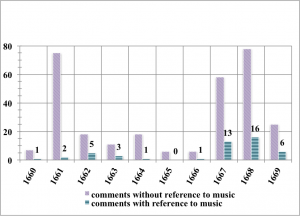
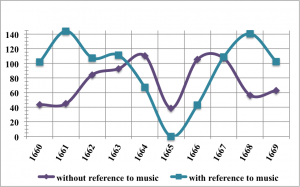
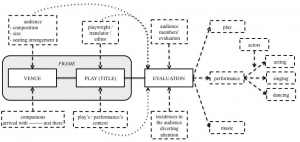
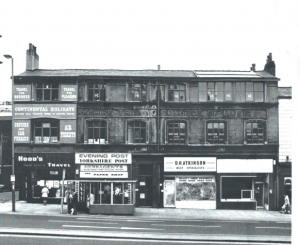

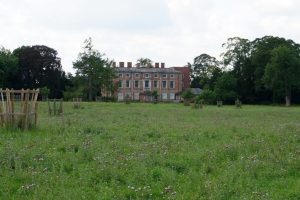
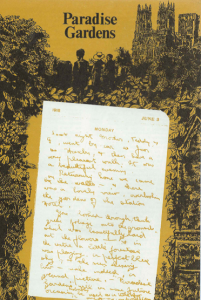

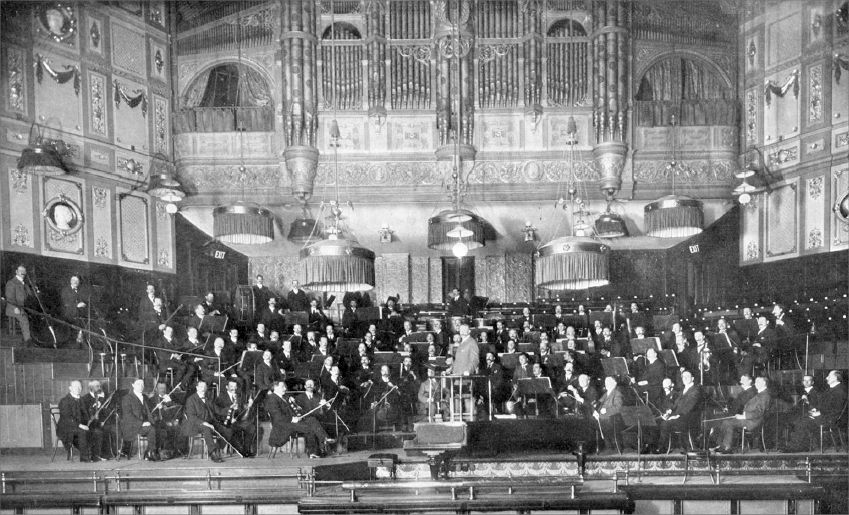

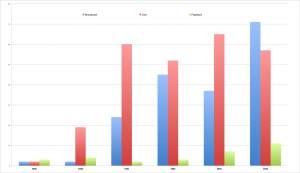
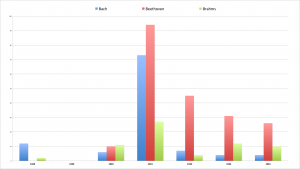
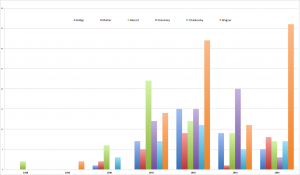
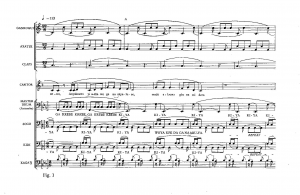
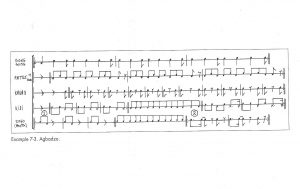
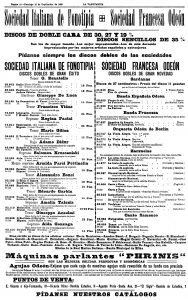
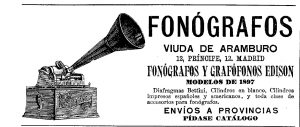




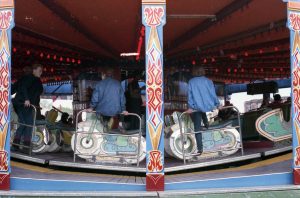
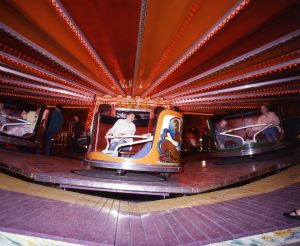

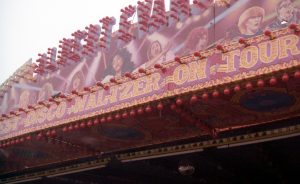
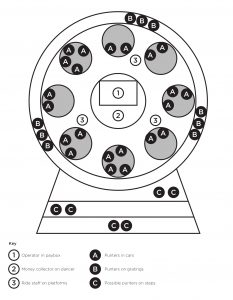
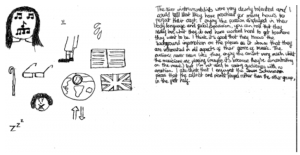
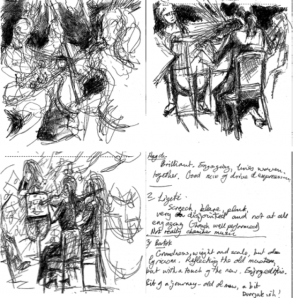
You must be logged in to post a comment.